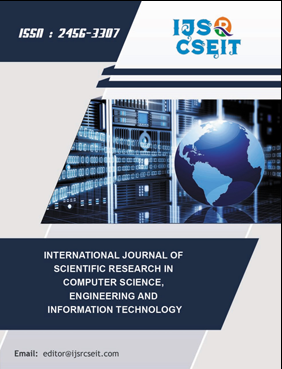Lean and Six Sigma based Business Process Management and Quality Management
Keywords:
Process, Business Process Management, Quality Management, Total Quality Management, Lean, Six Sigma, ISO 9000Abstract
In an environment of intense globalization and digitalization, business organizations are increasingly faced with various challenges such as rising costs, strong competition, rapidly evolving technologies, increasingly demanding and whimsical consumers, and, in social terms, changing societal demands. It is within this context that the effectiveness and efficiency of the management of business organizations is actualized. There is a lack of interdisciplinary research on the link between Business Process Management and Quality Management, and this study aims to ground this link. Methods of the research are literature review and the critical analysis of the scientific sources on the issue. The findings show that there exists confusion, overlaps among different paradigms of QM and BPM. The BPM paradigm might be considered as an integral part of almost all essential quality management paradigms. BPM is like a horizontal area “crossing” different paradigms of quality management (e.g., TQM, SMS, Lean, Six Sigma). The conclusions drawn are useful for organizations that implement quality management systems. The integration of BPM into quality management systems and tools creates preconditions for the development of an effective and efficient organization.
References
- Andersson, Roy, Henrik Eriksson, and Håkan Torstensson. 2006. Similarities and differences between TQM, six sigma and lean. The TQM Magazine 18: 282–96. [CrossRef]
- Bacoup, Pascal, Cedric Michel, Georges Habchi, and Magali Pralus. 2018. From a Quality Management System (QMS) to a Lean Quality Management System (LQMS). The TQM Journal 30: 20–42. [CrossRef]
- Bashan, Aviva, and Amos Notea. 2018. A hierarchical model for quality management systems in global organizations. International Journal of Quality and Reliability Management 35: 1380–98. [CrossRef]
- Becker, Jörg, Martin Kugeler, and Michael Rosemann. 2013a. Process Management: A Guide for the Design of Business Processes. Berlin: Springer. [CrossRef]
- Becker, Jörg, Nico Clever, Justus Holler, Johannes Püster, and Maria Shitkova. 2013b. Semantically Standardized and Transparent Process Model Collections via Process Building Blocks. Paper Presented at Fifth International Conference on Information, Process, and Knowledge Management—eKNOW, Valencia, Spain, 21–25 November; pp. 172–77.
- Beilmann, Sascha, and Nico Clever. 2019. Structuring Quality Management with the icebricks Business Process Management Approach. In The Art of Structuring. Bridging the Gap between Information Systems Research and Practice. Cham: Springer, pp. 167–78. [CrossRef]
- Bhat, Jyoti, and Jude Fernandez. 2010. BPM & Quality Management (TQM). Available online: https://www.bptrends.com/publicationfiles/04-10--BPM%20in%20India-BPM%20and%20Quality%20Mgt- Bhat-Fernandez.doc-final.pdf (accessed on 1 December 2019).
- Biazzo, Stefano, and Giovanni Bernardi. 2003. Process Management Practices and quality system standards: Risks and opportunities of the new ISO 9001 certification. Business Process Management Journal 9: 149–69. [CrossRef]
- Bollaert, Lucien. 2014. A Manual for Internal Quality Assurance in Higher Education. Berlin: Dr. Josef Raabe Verlags-GmbH.
- Chang, James F. 2006. Business Process Management Systems. Strategy and Implementation. New York: Auerbach Publications. [CrossRef]
- Chountalas, Panos T., and Athanasios G. Lagodimos. 2019. Paradigms in business process management specifications: A critical overview. Business Process Management Journal 25: 1040–69. [CrossRef]
- Chountalas, Panos T., Anastasios I. Magoutas, and Eleni Zografaki. 2019. The heterogenous implementation of ISO 9001 in service-oriented organizations. The TQM Journal 32: 56–77. [CrossRef]
- Dumas, Marlon, Marcello La Rosa, Jan Mendling, and Hajo A.Reijers. 2018. Fundamentals of Business Process Management. Berlin: Springer.
- Fischer, Marcus, Florian Imgrund, Christian Janiesch, and Axel Winkelmann. 2019. Directions for future research on the integration of SOA, BPM, and BRM. Business Process Management Journal 25: 1491–519. [CrossRef]
- Iden, Jon. 2012. Investigating process management in firms with quality systems: A multi-case study. Business Process Management Journal 18: 104–21. [CrossRef]
- Javidroozi, Vahid, Hanifa Shah, and Gerald Feldman. 2020. A framework for addressing the challenges of business process change during enterprise systems integration. Business Process Management Journal 26: 463–88. [CrossRef]
- Klimas, Darius. 2013. The Quality Formation Model of Business Process Management. Ph.D. dissertation, Vilnius University, Vilnius, Lithuania.
- Klun, Monika, and Peter Trkman. 2018. Business Process Management: At the crossroads. Business Process Management Journal 24: 786–813. [CrossRef]
- Martinez, Felipe. 2019. Process excellence the key for digitalization. Business Process Management Journal 25: 1716–33. [CrossRef]
- Näslund, Dag. 2008. Lean, Six Sigma and lean Sigma: Fads or real process improvement methods? Business Process Management Journal 14: 269–87. [CrossRef]
- Osmundsen, Karen, Jon Iden, and Bendik Bygstad. 2019. Organizing Robotic Process Automation: Balancing Loose and Tight Coupling. Paper Presented at 52nd Hawaii International Conference on System Sciences, Grand Wailea, HI, USA, 8–11 January; pp. 6918–26. [CrossRef]
- Palmberg, Klara. 2010. Experiences of implementing process management: A multiple-case study. Business Process Management Journal 16: 93–113. [CrossRef]
- Pereira, Veridiana Rotondaro, Antonio Cesar Amaru Maximiano, and Diógenes de Souza Bido. 2019. Resistance to change in BPM implementation. Business Process Management Journal 25: 1564–86. [CrossRef]
- Ruževicˇius, Juozas, Daiva Daugviliene˙, and Dalius Serafinas. 2008. Kokybe˙s vadybos taikymo aukštosiose mokyklose ˛ıžvalgos. Viešoji politika ir administravimas 24: 99–113.
Downloads
Published
Issue
Section
License
Copyright (c) IJSRCSEIT

This work is licensed under a Creative Commons Attribution 4.0 International License.

